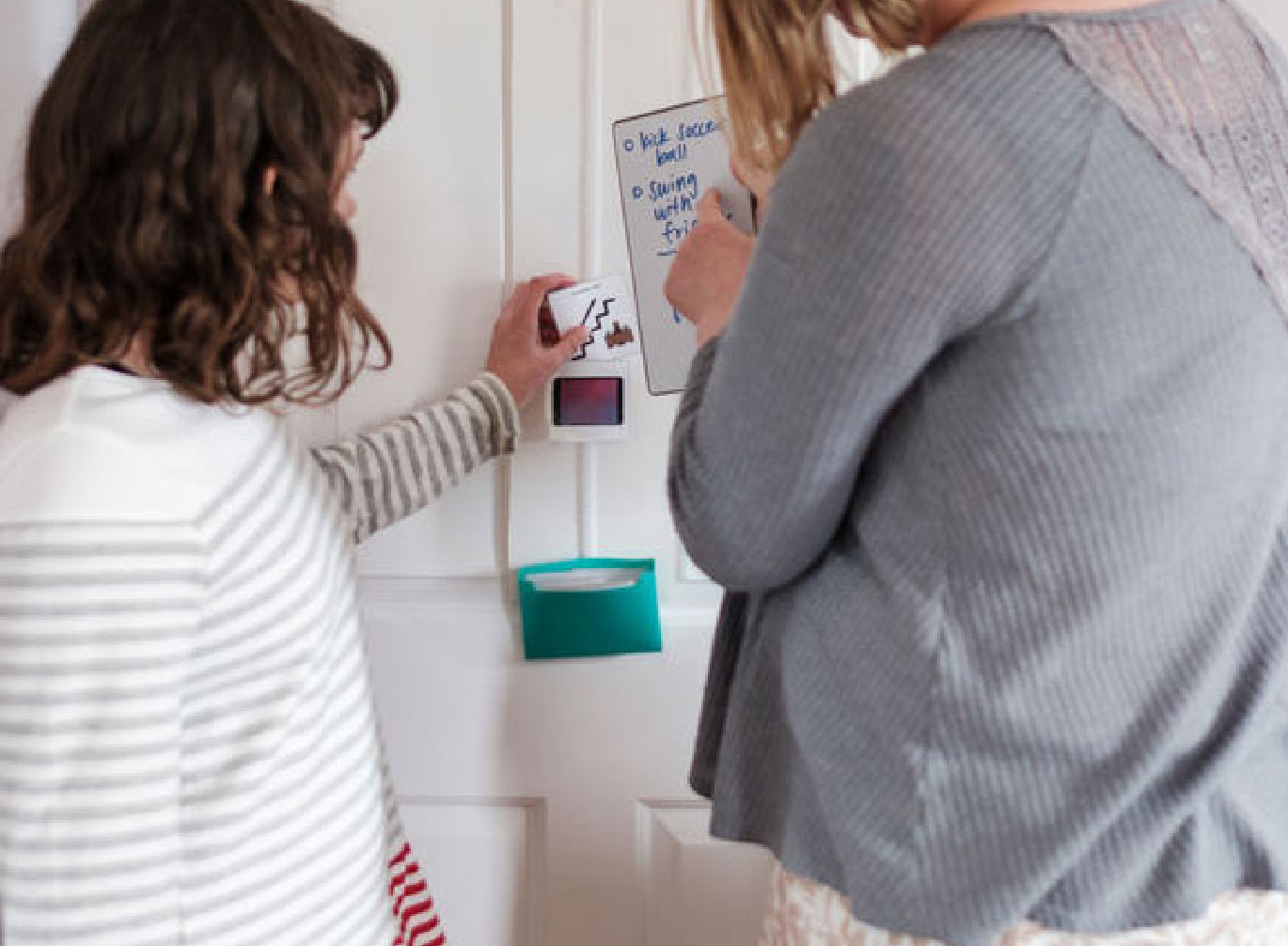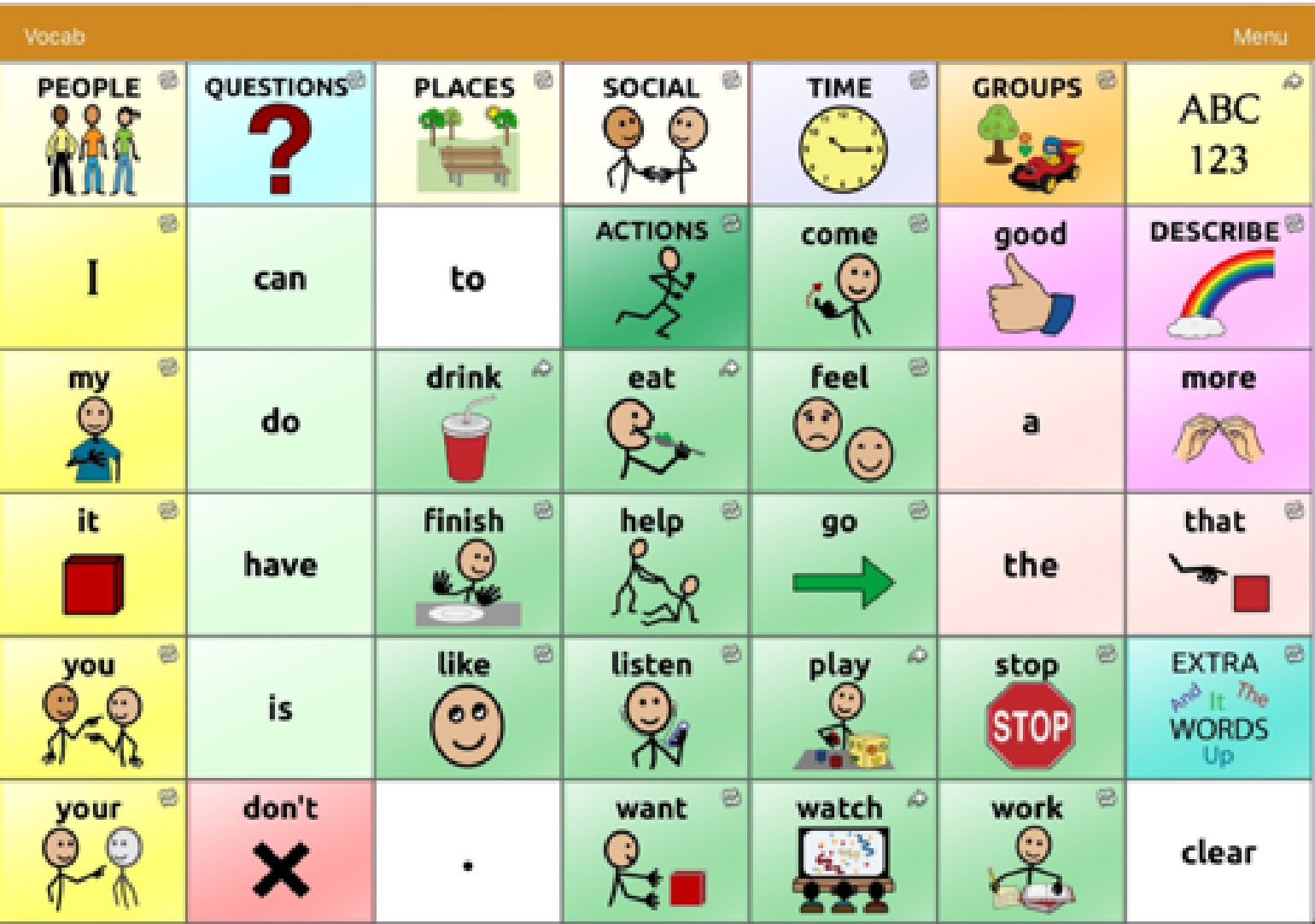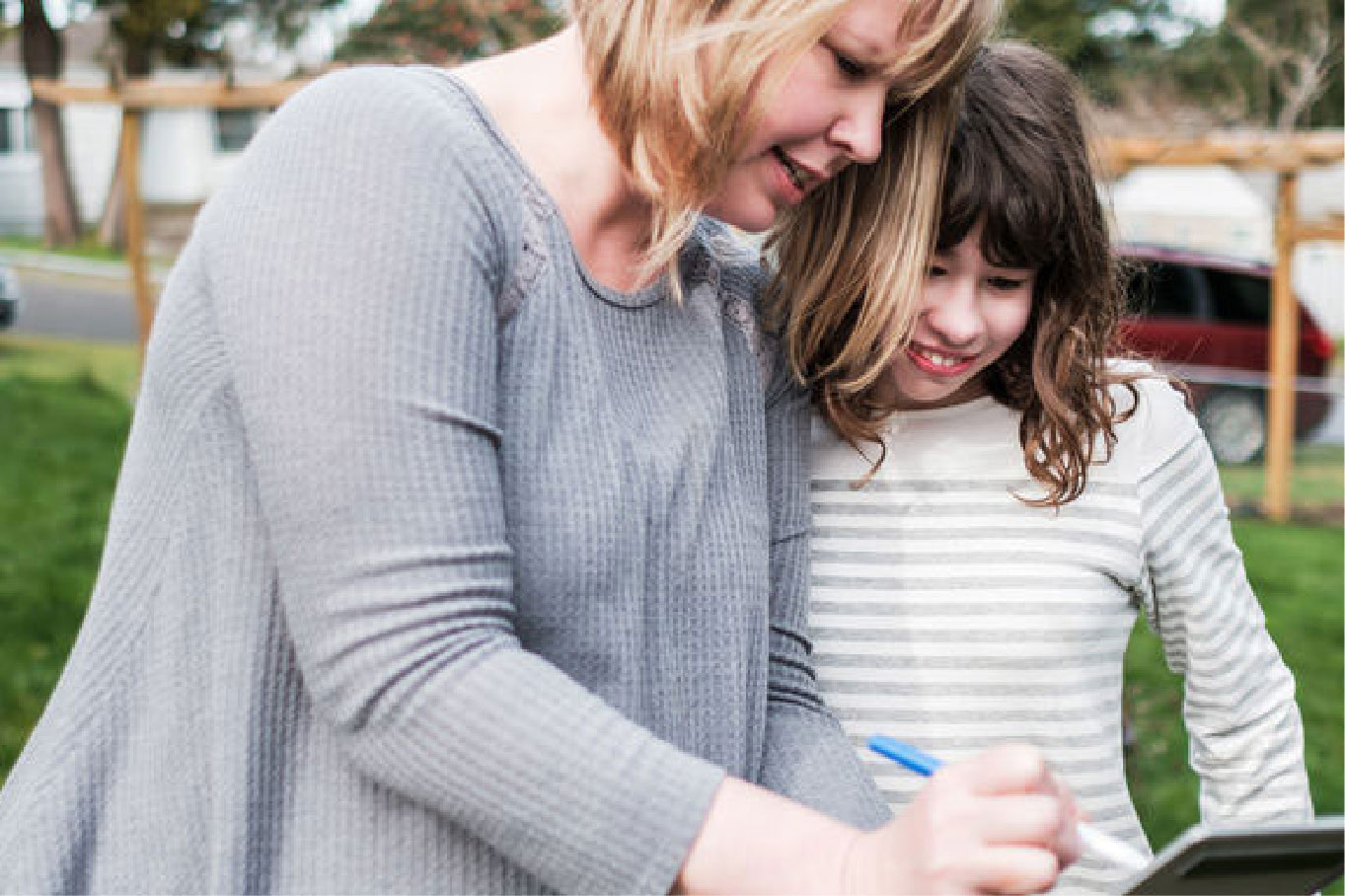For children with speech and language disorders who can’t verbalize clearly or at all, communicating with family members, caretakers, and friends can be difficult. The entire experience is often frustrating for the whole family and can lead to negative behaviors and social isolation in the child.
Augmentative and alternative communication (AAC) provides different and highly effective ways to interact with others. If you’re not familiar with AAC, we’ve got you covered. In this article, MeBe’s Clinical Director of Speech Language Pathology, Nikki Rosner, M.A., CCC-SLP, is sharing:
- What AAC is;
- Why it can be so life-changing for children and young adults with special needs;
- And how you can start using AAC in your household to help your family better communicate
For children with speech and language disorders who can’t verbalize clearly or at all, communicating with family member, caretakers, and friends is often frustrating. It can even lead to negative behaviors and social isolation.
What is AAC?
AAC basically refers to any communication methods outside of your run-of-the-mill chatter. It can be broken down into aided systems (where tools and devices are used to help communicate) and unaided systems. Examples include:
Pointing to pictures or words on a board
- A device or smartphone app that enables voice output of communication selected by the user (a voice output communicate device)
- Using sign language
- Gestures, body language, and facial expressions
- Writing with pen and paper

A lot of people with developmental challenges use at least one form of AAC to communicate with family and friends. More commonly, they will use AAC in addition to spoken utterances.
“One of the biggest misconceptions about AAC is that it ‘replaces’ a child’s voice,” explains Nikki. “Parents are afraid to use AAC methods because they don’t want their child to stop speaking. That’s not the case at all. AAC just helps those with developmental challenges communicate in a way that makes sense to them without the extra pressure to speak perfectly. It makes communication effective, easy, and rewarding for the child.”
Why can AAC be so powerful for children and young adults with special needs?
According to Nikki, AAC can be life-changing for young adults and children who have a hard time communicating or being clear in their message.
“It removes the frustration, stress, and defeatism around not being able to speak or make your needs known. I’ve seen kiddos who had previously avoided trying to speak completely transform with the help of AAC; they can’t wait to communicate because they realize there’s finally a way to be understood. And they are motivated to try using verbal language because their listener already knows what they want through their AAC.
Throughout my years of speech and language therapy with children, every single child who had the ability to understand and the motivation to communicate, but difficulty verbalizing words, was better able to communicate with AAC. That’s why I’m such a huge fan and why MeBe’s certified speech and language pathologists (SLPs) use AAC to help families tackle impaired speech, language, and social communication in order to increase their child’s overall motivation to communicate wants and needs.”
“AAC helps families tackle impaired speech, language, and social communication and increase their child’s motivation to communicate wants and needs. In my experience, every child who had the ability to understand and the motivation to communicate, but difficulty verbalizing words, was better able to communicate with AAC.”
How can I use AAC at home to help my child communicate better?
There are a lot of AAC methods and devices out there, but MeBe has seen great success with both children and parents using the app TouchChat HD – AAC with WordPower™. A downloadable app for iPhones, iPods, and iPads, TouchChat is great for those with ASD, Down syndrome, apraxia, and similar conditions affecting natural speech.

“I personally love TouchChat, particularly TouchChat with WordPower42 Basic, because it’s very user-friendly—parents and children can basically pick it up and go. The app is also very intuitive; it suggests sets of words as you form the sentence, such as guiding you to a screen with options like ‘eat’ or ‘feel’ after you touch ‘I.’ That’s great because the fewer clicks the kiddo has to make, the better. The more easily they learn the motor patterns, the less they have to think about communicating and the quicker they can access what they want or need.
The pages and layouts are customizable to best fit your child and the images are kid-friendly. Once your kiddo forms a sentence, the app reads it aloud in a voice of their choosing. In my experience, TouchChat is a really easy place to start for most parents and kids, especially since most are already familiar with navigating on a smartphone or tablet. And unlike a picture board, which isn’t portable and can possibly lose pieces, an app can be taken anywhere easily.”
Nikki’s final tip for parents: when trying out AAC, aim to create a communication device that is slightly above the child’s level so they see success but have room to grow. “Just keep in mind that finding this Goldilocks spot will probably take some trial and error. Start with highly motivating pictures of food items or toys your child frequently wants.
Choose one or two pictured items and help them understand pushing a button that says ‘cookie’ will gain them access to a cookie. Then, you can help them navigate across pages for something more complicated like ‘eat cookie.’
If your kiddo is high functioning but struggling with intelligibility or has a diagnosis of apraxia of speech (difficulty making accurate movements when speaking), then you may want to start with more complex vocabulary and whole sentences. Adjust as you go based on your kiddo’s experience and enjoy the process!”
I’m still not sure where to start. Help!
Don’t be afraid to reach out for help if you’re struggling to set up the right AAC program for your child. Our highly trained, friendly SLPs have years of experience—chat with us today about our AAC strategies and don’t forget to ask about a free MeBe AAC talk in your area. Contact us to learn more.
MeBe is hosting a free webinar on Thursday, November 17th to provide more information to parents and caregivers about Augmentative and Alternative Communication. Click here to register for the webinar “The Basics of AAC for Caregivers”.

